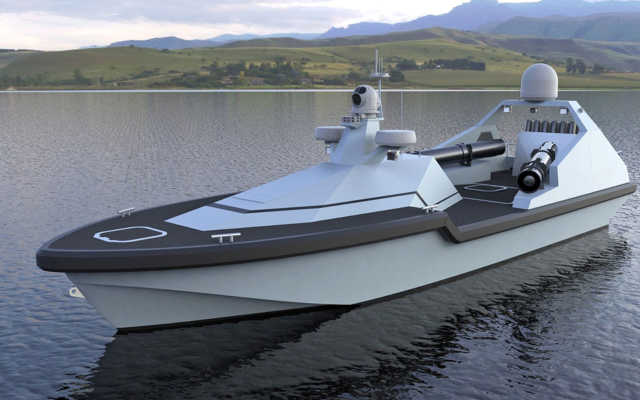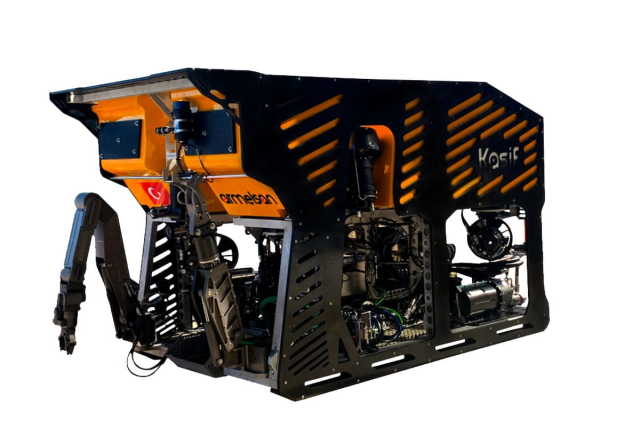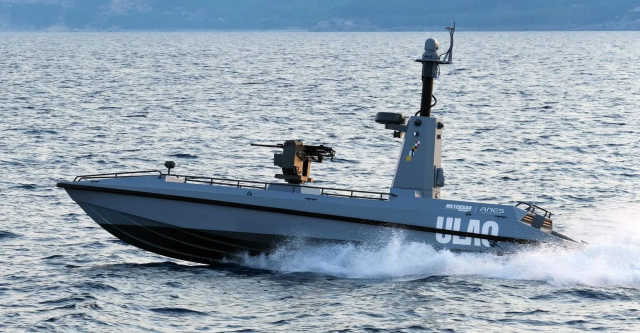Continuing the topic of the development of digital technologies and robotic complexes (RTCs) in the Turkish Armed Forces, we recall that Part I dealt with the achievements of the Turkish military-industrial complex in the field of swarm technologies, Part II concerned the production of unmanned aerial vehicles, and part III concerned ground-based RTCs. Let's conclude the topic of robotization of the Turkish Armed Forces with the achievements of the national defense industry in the field of marine autonomous systems.
Uninhabited surface vessels and underwater vehicles
ARES Shipyard (Antalya) and Meteksan Defense (Ankara) announced the creation of Turkey's first armed uninhabited surface vessel (Armed Unmanned Surface Vehicle, AUSV, hereinafter referred to as NNS) in October 2020 at a joint press conference. Launched in 2018, the project was named "Ulaq" (ULAQ). In ancient Turkish culture, he is an ambassador known for his military talents, knowledge and wisdom, and representing a state in Central Asia.

Uninhabited surface vessel ULAQThe development and conceptual research of the NNS took place in the period from 2018 to 2019.
Work on the design of the first prototype was completed in the first quarter of 2020. Production of the prototype was completed in June 2020, and design studies of the vessel's hull were completed in August. As a result, the first prototype of the NNS was launched in February 2021. The first firing tests of Ulak took place in March 2021. The vessel fired from 4 CIRIT and 2 L-UMTAS missile systems provided by the national manufacturer of missile systems Roketsan.
The design, construction and equipment of the NNS "Ulak" is carried out by the ARES Shipyard. Integration of remote control systems, autonomous systems, data processing and transmission systems are assigned to Meteksan Defense, and weapons systems are assigned to Roketsan.
The Ulak has a length of 11 m, a load capacity of up to 2 tons, a maximum cruising range of 400 km and a maximum speed of 35 knots (65 km/h). The vessel is equipped with an optoelectronic (day/night) surveillance system, a global navigation satellite system protected from interference, and encrypted communication equipment integrated with the GENESIS and ADVENT combat control systems developed specifically for the Turkish Navy.
Made of modern composite materials, Ulak is equipped with passive and active stabilization systems, damage control with the possibility of self-distribution, a telescopic mast, an antenna system that increases detection and identification capabilities, a radar navigation system and monitoring of the surface situation, as well as laser and infrared guided weapons complexes.
The coastal control station designed by Meteksan (Turkish abbreviation SAKI) is serviced by a crew of 2 people (captain and gunner). SAKI has a modular structure that allows it to be integrated into land vehicles or ships of the Turkish Navy. The station includes a noise-resistant C-band data transmission channel, navigation systems and software. A set of SAKI equipment, in general, allows you to manage several NNS at sea. It also guarantees the joint work of Ulak with other NNS or UAVs, as well as manned aircraft at a distance of direct visibility (up to 200 km). Communication with them is organized through the KEMENT tactical C-band data transmission channel developed by Meteksan. For control over long distances, it is possible to use retransmission through the infrastructure of the integrated communication system of the Turkish Armed Forces (Turkish Armed Forces Integrated Communication System, TAFICS).
In addition to missile systems, the Ulak payload may include other equipment, such as reconnaissance and electronic warfare. In addition to the fact that the vessel is an uninhabited surface vehicle with remote control, it is also planned to integrate other high-tech advanced capabilities into it: artificial intelligence, swarming technology, network-centric communication and the possibility of data sharing.
After developing the prototype, which is the first phase of a broader project, based on its open architecture and scalable structure, ARES Shipyard and Meteksan Defense engineers plan to create different versions of the NNS. So, in the future, specialized NNS should appear to collect intelligence and conduct electronic warfare, mine search, anti-submarine warfare (ASW), surface warfare missions (ASuW), firefighting, humanitarian assistance, search and rescue operations.
No less successfully, Turkish defense enterprises are developing robotic systems for underwater applications (Unmanned Underwater Vehicles, UUV). Thus, Armelsan company regularly demonstrates the remotely operated uninhabited underwater vehicle "Kasif" (KASIF, aka "Explorer") at exhibitions.

Uninhabited underwater vehicle KASIFThe product has dimensions of 3,2x1,9x1,7 m, is able to dive to a depth of 3000 m and remain operational for 24 hours.
At the same time, Kasif carries up to 350 kg of payload. The device has 6 video cameras, 6 backlight lights, 2 manipulators, sonar, navigation system. The NPA transmits the video image to the control ship in real time.
Experts believe that in the near future, in the depths of the Turkish defense industry, there will be NPAs designed to track enemy submarines and divers. According to defense sources, the Navy is developing a wireless underwater communications network system.
Due to the specifics of the underwater environment, numerous reflections, sonar signals and other noises, the problems facing engineers in this area are extremely high. Nevertheless, Turkish sources are confident that the potential of national companies will successfully cope with them, and in the future, NPAs will become an important component of surface warships and manned submarines of the Turkish Navy. The prospects for the active introduction of robotic systems to the Turkish fleet are highlighted by the decision taken to transform the universal amphibious assault ship of the Anadolu project (LPD ANADOLU) into a carrier of unmanned systems and RTCs for various purposes. At the same time, the issue of building a second similar ship "Trakia" (LPD TRAKYA) is being considered.
Thus, the development and spread of digital technologies has a direct impact on the appearance of the armed forces of the future. A wide range of robotic products presented by Turkish manufacturers indicates that the General Staff of the Turkish Armed Forces and the leadership of the defense Industry of the country are clearly aware of current trends in military affairs and actively support promising developments of advanced weapons systems.
Based on the materials of the European Security & Defense magazine

